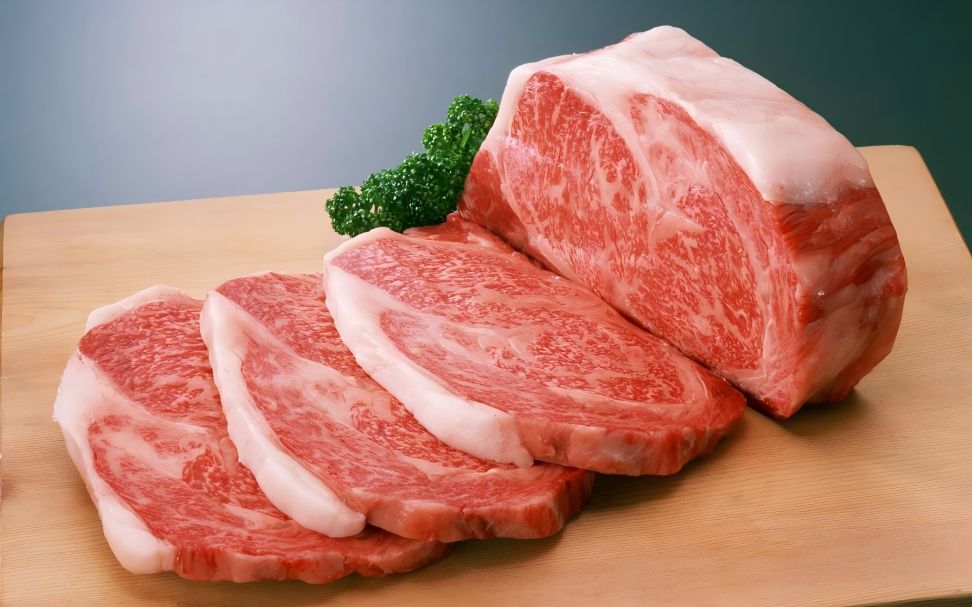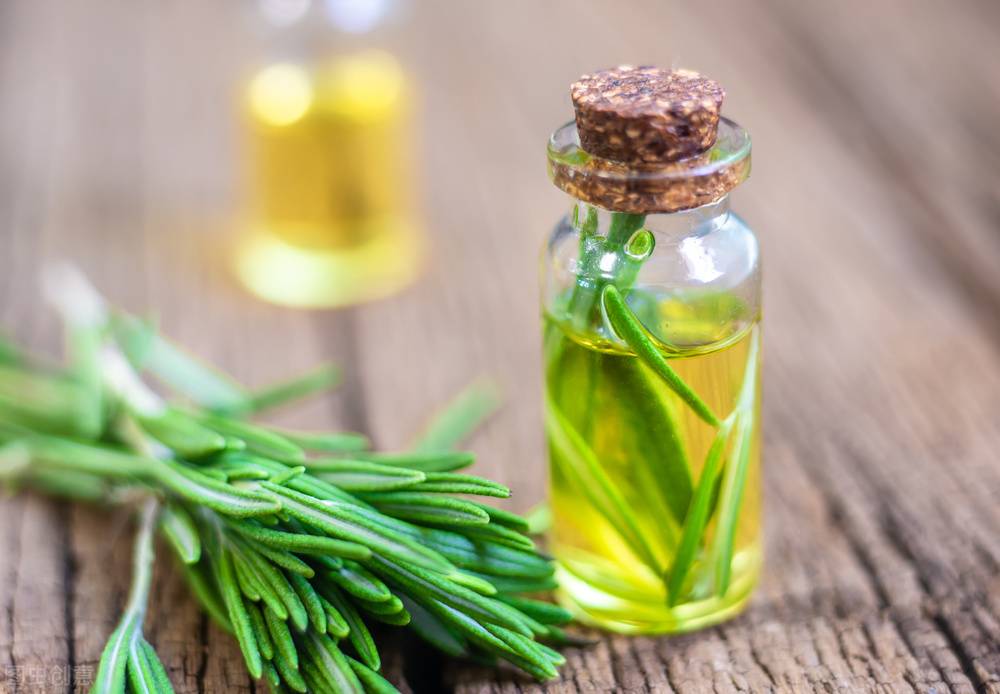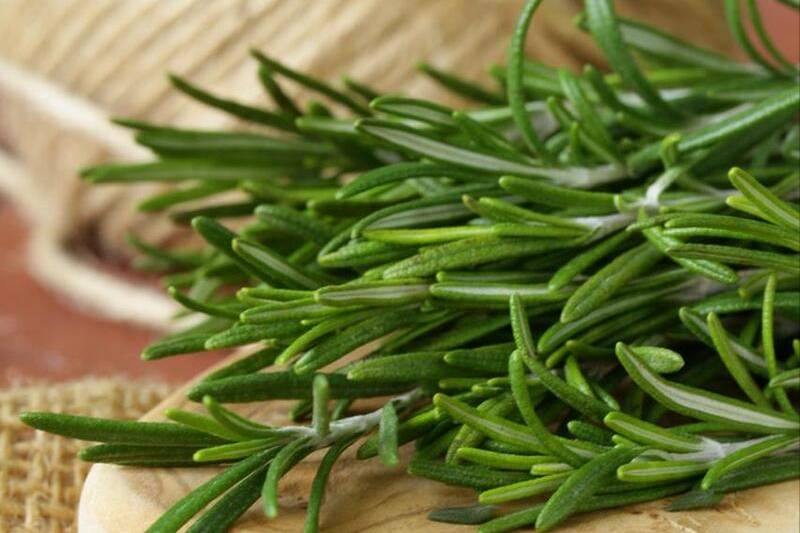How Is Rosemary Extract Rosemarinic Acid Used in Animal Feeding?
Since the implementation of the ban on antibiotics in feedstuffs, the search for green, safe and efficient alternatives to antibiotics has become an important part of the development of animal husbandry, among which plant extracts have great potential. Rosmarinic acid is a kind of natural phenolic acid widely distributed in plants, which has many biological functions such as antioxidant, anti-inflammatory and antibacterial, and has potential for the prevention and treatment of animal diseases.
In this paper, we analyzed the literature, introduced the physicochemical properties and absorption and metabolism of rosemarinic acid, and reviewed its biological functions such as antioxidant, anti-inflammatory and antibacterial functions as well as its potential mechanism of action, suggesting that rosemarinic acid has a certain effect on the maintenance of the stability of oxidative stress, inflammation and immune tripartite effects in animals, however, the current research on rosemarinic acid mainly focuses on model animals, and the research on livestock and poultry is not deep enough. However, the current research on rosmarinic acid mainly focuses on model animals, and the research on livestock and poultry is not deep enough, and more in-depth and comprehensive research on the role of rosmarinic acid in livestock and poultry is needed in the future.
Against the background of banning antibiotics in feed [ 1] , finding green, safe and efficient alternatives to antibiotics has become an important part of the development of animal husbandry, and plant extracts have attracted much attention due to their naturalness, non-toxicity and wide range of biological functions [ 2] . Rosemarinic acid is a natural phenolic acid compound extracted from plants of the Comfrey, Labiatae and Cucurbitaceae families [3], with a high content in the Comfrey and Labiatae families in particular, and has a wide range of medicinal and culinary values. Studies have shown that the antioxidant, anti-inflammatory and antimicrobial effects of diebelic acid are well recognized [ 4], and its antioxidant capacity is higher than that of many phenolic compounds, such as chlorogenic acid, caffeic acid and cinnamic acid [ 5].
In some animal studies, rosmarinic acid has shown potential for the prevention and treatment of animal diseases by improving the antioxidant capacity, body health and growth performance of livestock and poultry [ 6]. However, the current research mainly focuses on model animals, and there are fewer studies on livestock and poultry. In recent years, the development of modern molecular biology and analytical techniques has facilitated the study of the action pathways of bioactive substances in natural plants [ 7] . In this paper, through introducing the physicochemical properties of rosmarinic acid and its absorption and metabolism in the body, and analyzing the structure of rosmarinic acid and its functional relationship, we summarize the relevant action pathways of rosmarinic acid in exerting its biological functions of antioxidant, anti-inflammatory and antimicrobial as well as the prospects of its application in livestock and poultry production. The aim is to provide a reference basis for the development and utilization of rosemarinic acid in new feed additives, and to promote the application of plant functional components in livestock and poultry production.
1Physicochemical Properties and Absorption and Metabolism of Rosmarinic Acid
1.1 Physicochemical Properties of Rosmarinic Acid
Rosmarinic acid was first isolated in 1958 by two Italian chemists, Scarpati and Orientes, and was named after its isolation from rosemary [8]. The content of rosemarinic acid is high in plants of the families Labiatae and Ziziphus, but it varies in different seasons and in different parts of the plant, and is usually higher in flowers than in leaves [9].
Rosmarinic acid is formed in plants by the condensation of caffeic acid and 3,4-dihydroxyphenyl lactic acid, and its chemical name is [ R(E) ] α-[[ 3-(3,4-dihydroxyphenyl)-1-oxo-2-propenyl]oxy]-3,4-dihydroxybenzenepropanoic acid, with the chemical formula of C18 H16 O8, which is easily soluble in aqueous solution of water, methanol, and ethanol, and insoluble in anhydrous ethanol, aether and other organic solvents, and has a special herbal odor [10]. It has a special herbaceous odor of rosemary [ 10] , and its structure is shown in Figure 1 [ 11] . Rosmarinic acid has a good stability, and the effects of pH and temperature on its stability are very small, but light and two kinds of metal ions, calcium ion (Ca2+) and magnesium ion (Mg2+), are more detrimental to its stability, and this characteristic greatly limits its utilization in organisms [12].
The common methods of rosmarinic acid extraction include decoction, solvent extraction, ultrasonic extraction and supercritical extraction, etc. In one study, ionic liquid was used as the solvent to extract rosmarinic acid from perilla seeds, and the yield of rosmarinic acid was 4.0 mg/g at a concentration of 5% of ionic liquid, an extraction time of 50 s, and a microwave stimulation power of 350 W. However, ionic liquid is more costly and biodegradable [13]. However, ionic liquids are costly and biodegradable[ 13]. The subcritical water extraction method is to use the polarity change of water to extract the compounds, with less solvent residue, energy saving and green characteristics. Yan Linlin et al [ 14] utilized subcritical aqueous extraction to obtain 4.91 mg/g of rosmarinic acid from Perilla frutescens seed meal at an extraction temperature of 163 ℃, an extraction time of 30 min, and a liquid-liquid ratio of 41 mL/g. Liu Gencai et al [ 15] utilized ultrasonic extraction to extract 0.61 mg/g of rosmarinic acid from Perilla frutescens leaves at an ethanol volumetric fraction of 39%, an ingredient-liquid ratio of 1:9, and an ultrasonic time of 63 min. The extraction rate of rosemarinic acid from Perilla frutescens reached 0.61%.
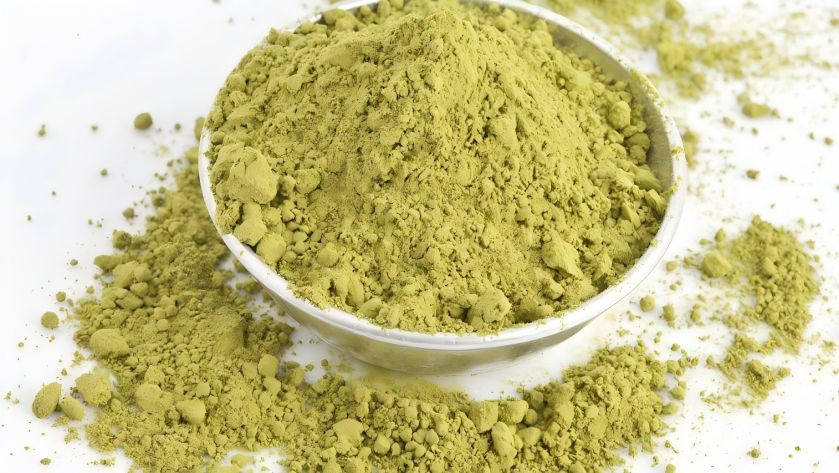
1.2 Absorption and Metabolism of Rosmarinic Acid
In general, the gastric environment greatly affects the absorption of ingested phenolic compounds, whereas the intestinal environment has less impact on their digestion. After entering the body through the esophagus, rosmarinic acid is absorbed in the gastrointestinal tract at a rate of less than 1% of the ingested amount [ 16], and is first metabolized by the intestinal microbiota [ 17], degraded by microbial esterases to the structurally simple phenolic acids [ 18], and then metabolized to other products by a variety of pathways, including sulfate esterification, methylation, glucose incorporation, and glucuronic acid, and then absorbed through the paracellular pathway of the intestinal cells [ 19]. Finally, it is absorbed through the paracellular pathway of intestinal cells [ 19 ]. The caffeic acid fragment produced after cleavage of rosmarinic acid is metabolized to ferulic acid [20], which may undergo further sulfation and methoxylation of the hydroxyl group, and hydroxylation, dihydroxylation, and methyloxylation to 2,3,4-trimethoxycinnamic acid and m-coumaric acid [21], and 3,4-hydroxyphenol lactic acid is metabolized to phenylglycoacetic acid [22] and protocatechuic acid [23], which is metabolized to p-hydroxybenzoic acid or vanillic acid. Protocatechuic acid is further metabolized to p-hydroxybenzoic acid or vanillic acid [24].
The highest levels of rosmarinic acid and its metabolites are found in the kidneys, followed by the lungs, spleen and liver [25], and small amounts are also detected in bone and muscle [26]. Most of the metabolites of rosmarinic acid are excreted within 6 h of ingestion, mainly via the kidneys in urine and the liver in bile [26-27], and caffeic acid, ferulic acid, 2,3,4-trimethoxycinnamic acid, m-coumaric acid, p-hydroxybenzoic acid and vanillic acid were detected in the urine in both free and conjugated forms [23].
2 Biological Functions and Mechanisms of Action of Rosmarinic Acid
2.1 Antioxidant Functions and Mechanisms of Action
The o-diphenol hydroxyl group in the structure of rosemarinic acid gives it a good antioxidant effect, and it can scavenge free radicals in vivo by dehydrogenation.Sevgi et al. [5], in evaluating the antioxidant and DNA damage protection ability of ten different phenolic acids, including rosmarinic acid, caffeic acid, and chlorogenic acid, found that the highest scavenging capacity of rosemary acid was found at 0.1 mg/mL for 2,2-diphenyl-1-picrylhydrazyl (DPPH) with 91.5 mg/mL, and that the highest scavenging capacity was found at 0.1 mg/mL for DPPH. diphenyl-1-picrylhydrazyl (DPPH) radical scavenging ability was the highest, reaching 91.50%. The highest scavenging capacity of free radicals was 91.50%. In the process of scavenging free radicals, the hydrogen atoms on the neighboring hydroxyl group were detached to form a semiquinone or quinone structure to achieve the antioxidant effect[28] , and the scavenging process is shown in Figure 2[29] . The hydrogen ions can form strong intramolecular hydrogen bonds after detachment, which makes the reaction easier. The conjugated double bond at the C3 position in the structure of rosemarinic acid can disperse the electron cloud, which also enhances its antioxidant effect [30].
Rosemarinic acid can achieve antioxidant effects by scavenging reactive oxy- gen species (ROS) and increasing antioxidant molecules.Fernando et al. [31] found that 2.5 μmol/L rosemarinic acid scavenges 60% of the intracellular ROS in peroxynitrite (H2 O2)-treated human keratinocytes, which could reduce H2 O2-induced oxidative damage by modulating the cellular antioxidant system. It attenuated H2 O2-induced oxidative damage by regulating the cellular antioxidant system. Inhibition of cytochrome P450 2E1 (CYP2E1), which activates the endoplasmic reticulum to produce ROS, may help to reduce ROS-induced damage.
Hasanein et al. [32] demonstrated that oral administration of rosemarinic acid (100 mg/kg) inhibited hepatic CYP2E1 activity and reduced prooxidant levels and enhanced antioxidant capacity by increasing glutathi- one (GSH) and glutathione transferase (GFT) activity in rats with acetaminophen-induced oxidative damage and hepatotoxicity. In addition, the effects of rosemarinic acid at different concentrations (20, 40 and 80 μmol/L) on the oxidative damage and inflammation induced by lipopolysaccharide (LPS) in peripheral blood mononuclear cells were found to reduce oxidative stress by inhibiting lipid peroxidation and nitric oxide production, and to enhance the activity of glutathione peroxidase (GPO), which is the most important antioxidant enzyme in peripheral blood. Rosemarinic acid was found to reduce oxidative stress by inhibiting lipid peroxidation and nitric oxide production, and to enhance glutathione peroxidase (GPX) and superoxide dismutase (SOD) activity [33].
As a transcription factor, nuclear factor E2-related factor 2 (Nrf2) plays a key role in the anti-oxidative stress system and can regulate the expression of various antioxidant enzymes. In a rat model stimulated with potassium dichromate, a protective effect of rosmarinic acid (25 mg/kg) was observed in rats by gavage for 60 d. It reduced oxidative damage in liver and kidney tissues through up-regulation of the Nrf2 signaling pathway, and the treatment of rosmarinic acid resulted in a significant increase in the content of GSH and a significant decrease in the content of the oxidized product malondialdehyde (MDA) compared with the model group [34]. and malondialdehyde (MDA), the oxidized product, were significantly reduced compared to the model group [34]. Similar findings were observed in a porcine feeding assay, in which the combination of 20 mg/kg of rosemarinic acid and 300 mg/kg of hesperidin significantly increased the total antioxidant capacity and SOD activity of the porcine cecum, as well as enhanced the relative mRNA expression of Nrf2, after feeding the porcine ration for 90 d [35].
In addition, after treating zebrafish with meth- amphetamine (MA)-induced oxidative stress injury with zinc oxide (ZnO)/chitosan nanoparticles encapsulated with rosmarinic acid, it was found that 15 mg of rosmarinic acid could effectively inhibit the elevation of the mRNA level of cystathionine 3 (Caspase-3 (CASP3)) and significantly reduce the MA-induced oxidative stress injury [36]. It was found that 15 mg of rosmarinic acid effectively inhibited the increase of Caspase-3 (CASP3) mRNA level, and significantly reduced MA-induced oxidative stress [36]. In conclusion, rosemarinic acid can reduce oxidative stress by scavenging ROS, increasing antioxidant factors, decreasing the level of pro-oxidant compounds and regulating signaling pathways, and its own chemical structure is the main reason for its antioxidant activity.
2.2 Anti-Inflammatory Function and Mechanism of Action
Rosmarinic acid exhibits excellent anti-inflammatory activity during complement activation at sites of inflammation, and it can inhibit complement activity by covalently binding to C3b, the active complement substance, thereby suppressing the inflammatory response [37]. Activation of nuclear factor kappa-B (NF-κB) induces the production of a variety of pro-inflammatory cytokines and enzymes, and rosemarinic acid can exert its anti-inflammatory activity by inhibiting NF-κB through the inhibition of receptor recognition and signaling, phosphorylation activation, and the transcription of pro-inflammatory cytokine genes (Figure 3) [38-40]. Toll-like receptor 4 (TLR4) is a cell membrane receptor that induces NF-κB activation and triggers inflammation as part of the Toll-like receptor and pattern recognition receptor [41]. Ma et al. [37] treated rat adrenal pheochromocytoma cell line cells with 5, 10, and 20 μg/mL of rosmarinic acid for 24 h, respectively, and found that rosemary acid inhibited TLR4/NF-κB activation through the inhibition of TLR4/NF-κB activation and transcription of pro-inflammatory cytokine genes [38-40]. It was found that rosemarinic acid reduced LPS-induced inflammation by inhibiting the TLR4/NF-κB signaling pathway and lowering the expression of tumor necrosis factor-α (TNF-α), interleukin-6 (IL-6), and inter-leukin-1β (IL-1β). This reduces LPS-induced inflammation.
The activation of NF-κB requires its phosphorylation [42]. In a mouse model of LPS-induced acute lung injury, a mixture of mesalate, chlorogenic acid and isoxazepidine inhibited cellular phosphorylation of NF-κB, thereby reducing inflammation, as well as nitric oxide and pro-inflammatory factors [38]. High mobility group box-1 protein (HMGB1) is a protein located in the nucleus of cells, which can activate the expression of pro-inflammatory cytokine genes by coordinating gene transcription [43]. Lin et al. [39] found that 2 g/kg rosemarinic acid administered orally to rats for 4 weeks inhibited the HMGB1/TLR4 axis signaling pathway and reduced the activation of NF-κB and the production of pro-inflammatory cytokines, thus alleviating liver inflammation in rats.
Rosemarinic acid can also act on different enzymes for anti-inflammatory purposes, the main mediator being cyclooxygenase. 50 mg/(kg -d) of rosemarinic acid in rats for 60 d significantly suppressed lipid peroxidation and inflammation by inhibiting the expression of cyclooxygenase and decreasing the level of prostaglandins [44]. In vivo experiments in rats showed that 60 mg/kg of rosemarinic acid significantly reduced the severity of colitis in rats, and its mechanism of action was related to signal transducer and activator of transcription 3 (STAT3), which was inhibited to reduce IL-1β, IL-2β, and IL-2β in the colon. Inhibition of STAT3 reduces the production of IL-1β, IL-6 and the expression of cyclooxygenase in the mouse colon, thereby suppressing cellular inflammation [45].
Rosmarinic acid also exerts anti-inflammatory activity by inhibiting the activation of inflammatory vesicles. The NLRP3 inflammatory vesicle complex, which is composed of NOD-like receptor thermal protein domain associated pro- tein 3 (NLRP3), apoptosis-associated plakelike protein, and cysteine-1 precursor, was inhibited by rosmarinic acid. The NLRP3 inflammatory vesicle complex, which is a combination of apoptosis-associated speck-like protein and cysteinyl aspartate-1 precursor, is inhibited by rosmarinic acid. After gavage of Swiss albino mice with 100 mg/kg of rosmarinic acid for 2 d, it was found that rosmarinic acid inhibited the activation of the NLRP3 signaling pathway by blocking cysteine protease-1 and its downstream signaling molecule, IL-1β, and the activation of NF-κB and the expression of cyclo-oxygenase, thus preventing the acute kidney injury involved in the NLRP3 pathway [46]. The activation of NF-κB and the expression of cyclooxygenase proteins were also inhibited, effectively preventing NLRP3-involved acute kidney injury [46]. In addition, since oxidative stress and inflammation are mutually influenced in vivo, Nrf2, as a key transcription factor, plays an important role in regulating both cellular antioxidant and inflammatory responses [47], and rosemarinic acid not only plays an antioxidant role in its regulation, but also has a high mitigating effect on inflammation, and influencing the inflammatory homeostasis of the body through antioxidant effects is also an important pathway in which rosemarinic acid can play an important role.
2.3 Antimicrobial Functions and Mechanisms of Action
Rosmarinic acid has shown good antibacterial activity in several studies, and inhibition of cellular energy supply and disruption of cellular structural integrity are the main routes of action against bacteria. Enolase is a key glycolytic metalloenzyme involved in sugar metabolism in bacteria, mainly responsible for catalyzing the conversion of 2-phosphoglycerate to phosphoenolpyruvate during glycolysis, providing substrate support for subsequent oxidative phosphorylation, and it is an important protein in the process of glycolysis [48]. The results of molecular docking showed that rosemarinic acid could bind to Mg2+ of enolase through metal-receptor interaction, and the benzene ring of rosemarinic acid could form hydrogen bond with amino acid to inhibit the expression of enolase, which affected the normal metabolism and glycolysis of bacteria and led to the insufficient supply of energy for the physiological activities of the bacteria, and thus inhibited the growth of the bacteria [49].
Ivanov et al. [50] found that rosmarinic acid could inhibit fungal activity by disrupting the integrity of cell membranes and decreasing mitochondrial activity. After treatment of Candida with 0.1 mg/mL rosmarinic acid, the uptake rate of crystal violet was increased from 15.8% to 39.6% due to a change in the permeability of cell membranes, and the activity of mitochondria was reduced by more than 50%. Rosemarinic acid inhibited both Escherichia coli and Salmonella, the main pathogens of bacterial diarrhea in animals, especially E. coli, by destroying its cellular structure, leading to the efflux of the content material, and preventing its growth and reproduction, and at the same time inhibiting the activity of sodium ion (Na+)/potassium ion (K+)-ATPase in the phospholipid bilayer of the cell, leading to the disruption of the Na+/K+ equilibrium, the lowest inhibitory concentration of rosemarinic acid on E. coli and the lowest inhibitory concentration of rosemarinic acid on E. coli were 0.5 mg/kg.
The minimum inhibitory and bactericidal concentrations of rosemarinic acid against E. coli were 0.8 and 0.9 mg/mL, respectively [51]. In addition, rosemarinic acid can also up-regulate the mRNA and protein expression of putative kinase 1 (PINK1), promote the phosphorylation of ubiquitin-conjugating enzyme E3 from cytoplasm to mitochondria, enhance the interaction between PINK1 and ubiquitin-conjugating enzyme E3 and their co-localization in macrophage cells, and improve the antibacterial and immunological activity of macrophage cells by enhancing PINK1-mediated autophagy in the mitochondria. This enhances the antimicrobial immunity of macrophages through the enhancement of PINK1-mediated mitochondrial autophagy [52].
2.4 Other Functions and Mechanisms of Action
A large number of experiments have proved that rosmarinic acid has anti-tumor, hypoglycemic, neuroprotective and hepatoprotective effects. Rosemarinic acid has fewer toxic side effects than chemotherapeutic drugs, and it can regulate the secretion of cytokines related to inflammation and angiogenesis, and inhibit the growth of tumors by suppressing the expression of NF-κB p65 in the microenvironment of xenografts [53]. In addition, rosemarinic acid can reduce the expression of hedgehog (Hh) signaling pathway-related genes and glioma-associated oncogene homolog 1, down-regulate the expression of the anti-apoptotic gene B-cell lymphoma-2 (Bcl-2), and up-regulate the expression of the pro-apoptotic gene Bcl-2-associated X protein (Bax), as well as the expression of the pro-apoptotic gene Bcl-2-associated X protein (Bax). associated X protein (Bax), which exerts anticancer effects by inhibiting the viability and migration of breast cancer stem cells [54]. Rosmarinic acid has a significant hypoglycemic effect on diabetic rats. 120 mg/kg of rosemarinic acid can improve glucose utilization and insulin sensitivity in rats, and the effect is dose-dependent, and its mechanism of action is related to the decrease of phosphoenolpyruvate carboxylase expression in liver and the increase of glucose transporter protein-4 expression in skeletal muscle [55].
It has also been demonstrated that rosmarinic acid can protect nigrostriatal dopamine neurons from the toxic effects of 6-hydroxydopamine by reducing nigrostriatal iron levels and modulating the ratio of Bcl-2/Bax gene expression, alleviating the severe reduction in cell counts and striatal dopamine content caused by the oxidative neurotoxin 6-hydroxydopamine [56]. In some studies, rosmarinic acid showed significant hepatoprotective ability. 10 mg/kg of rosmarinic acid significantly attenuated the degree of hepatic fibrosis in hepatic fibrotic rats, improved biochemical indices such as albumin, globulin, alanine aminotransferase and glutamate aminotransferase, and down-regulated the expression of transforming growth factor-β1 (TGF-β1) and connective tissue growth factor (CTGF) in the liver [57]. TGF-β1 and connective tissue growth factor [57]. In addition to down-regulating hepatic TGF-β1 expression, 20 mg/kg rosemarinic acid can also reduce hepatic collagen deposition and improve hepatic inflammation caused by extrahepatic cholestasis [58].
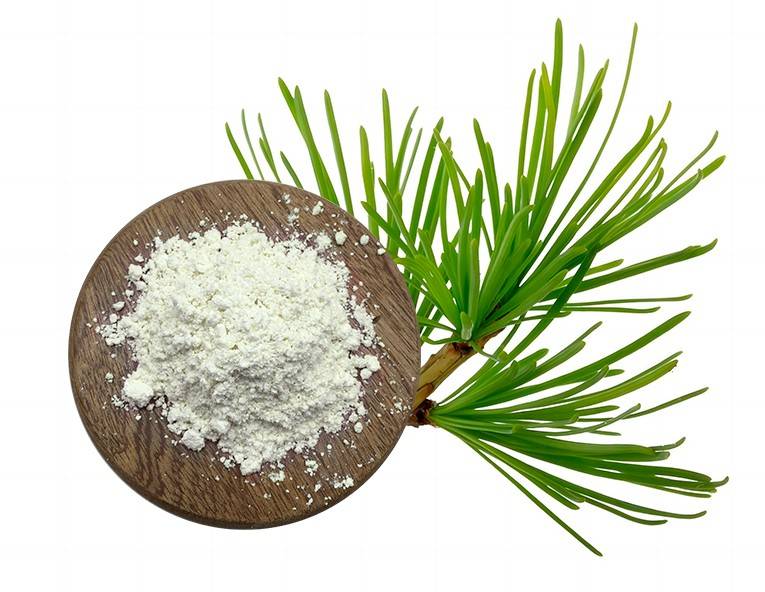
3 Application of Diebelic Acid and Phenolic Compounds in Animal Feeding
With the banning of antibiotics in livestock feed, the rapid development of the livestock industry and the increasing demand for animal products, the development of greener and safer alternatives to antibiotics has become one of the key issues facing the livestock industry. Plant extracts are considered as innovative and efficient feed additives for livestock and poultry production due to their excellent biological functions such as antioxidant, anti-inflammatory and bacteriostatic. The application of plant extracts can significantly improve animal performance, immunity and product quality, and shows a very promising application prospect. Rosmarinic acid, as a high-quality functional component of natural plant extracts, can be used as a highly efficient and green plant additive in livestock production, but few studies have been conducted on its direct application in livestock production.
3.1 Application of Rosemarinic Acid in Animal Feeding
Rosmarinic acid as a feed additive can exert its good antioxidant properties and enhance the antioxidant capacity of animals to a certain extent. The addition of 200 mg/kg rosemarinic acid to the diet of fattening pigs can significantly increase the immunoglobulin content in serum, increase the activity of antioxidant enzymes in serum, liver and muscle, reduce the MDA content, and enhance the immunity and antioxidant capacity of the body. In addition, rosemarinic acid can up-regulate the expression of genes related to lipolysis and down-regulate the expression of genes related to fat synthesis in cortical fat and liver tissues, thus improving the fat metabolism and alleviating the fat deposition [59]. The same results were also found in white feather broilers. 30 mg/kg of rosemarinic acid significantly increased the mRNA expression of the antioxidant gene Nrf2 in the breast muscle of white feather broilers, and significantly decreased the MDA content, which led to the improvement of antioxidant capacity of white feather broilers [60].
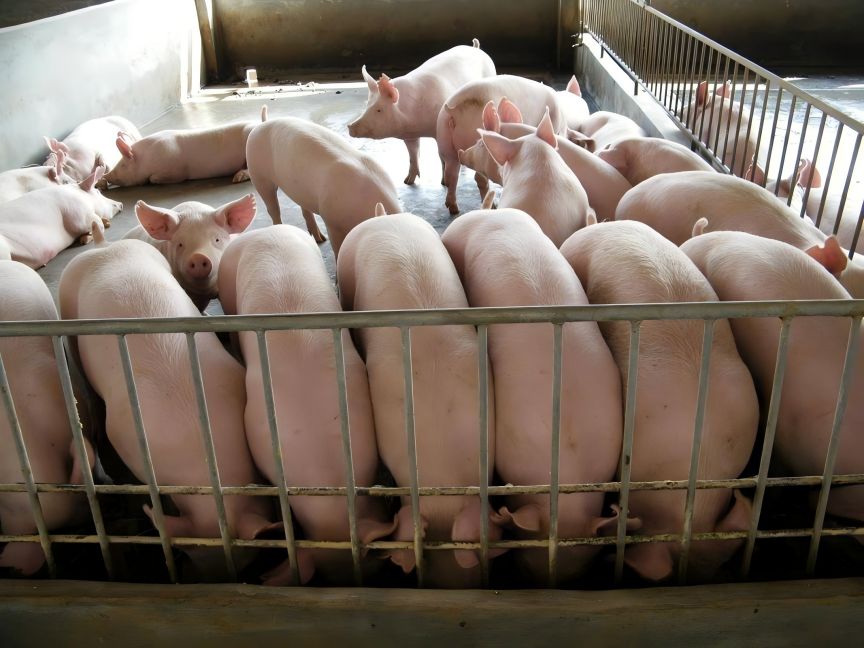
The antimicrobial properties of rosemarinic acid can improve the performance of animals by regulating the intestinal flora and inhibiting pathogenic microorganisms. Lei et al. [61] found that the addition of 500 mg/kg rosemarinic acid to the diet could improve the structural morphology of the colon, regulate the composition of the colonic flora, and increase the content of bacterial metabolites in the colonic chowder, which could help to maintain the function of the colonic barrier and alleviate the diarrhea of weaned piglets. The addition of 40, 80, and 160 mg/kg of rosemarinic acid to broiler diets showed that 160 mg/kg of rosemarinic acid significantly reduced the number of oocysts in the feces, the liver index, and the serum ghrelin activity of broilers infected with Ehrlichia pilosula at the age of 21 days, and significantly increased the average daily weight gain from 15 to 21 days of age, which effectively alleviated the growth retardation induced by the infection of Ehrlichia pilosula. It also improved the immune performance of broilers [62].
3.2 Phenolic Acids in Livestock Production
Phenolic acid compounds are a group of compounds mainly containing hydrogen atoms, carboxyl groups and phenolic groups, and have been proven to have various biological functions in animal production. In addition to antioxidant, anti-inflammatory and antibacterial effects, they also show certain improvement effects on the digestive flora, production performance and health of animals. The addition of chlorogenic acid at 1,000 mg/kg to the diet of weaned piglets significantly increased the activity of jejunal and ileal mucosal diamine oxidase, and the content of jejunal transforming growth factor α increased, which had a beneficial effect on the intestinal epithelial barrier function, and at the same time, the addition of chlorogenic acid to the diet stimulated the production of more short-chain fatty acids by bacteria to regulate the pH of the intestine, which promoted the growth of probiotic bacteria [63].
Zhang Quanyu [ 64] found that the addition of 1 g/kg of gallic acid to the diet of pre-weaned calves significantly increased the feed intake, average daily weight gain and nutrient digestibility of calves, and improved the growth performance of calves; moreover, the addition of gallic acid had a certain modulating effect on the rumen bacterial community, and increased the relative abundance of Saccharofermentans, which is involved in sugar metabolism, and enhanced the rumen sugar metabolism. In addition, the addition of gallic acid had a certain modulating effect on the rumen bacterial community, increased the relative abundance of Saccharofermentans involved in sugar metabolism, and enhanced the rumen sugar metabolism. In laying hens, vanadium was added to the diet at 10 and 15 mg/kg, and tea polyphenols at 600 and 1,000 mg/kg. After 8 weeks of feeding, tea polyphenols significantly increased the activities of hepatic glutathione transferase (GGT) and GPX, and improved the hepatic resistance to oxidative stress, and tea polyphenols prevented vanadium from decreasing the quality of egg whites and bleaching the color of shells in laying hens [65]. The addition of 0.1% essential oils consisting of carvacrol, cinnamaldehyde and thymol to piglet diets significantly increased the average daily weight gain of piglets after 42 d. The essential oils also improved the intestinal barrier function and intestinal inflammation of piglets, and increased the expression of tight junction protein mRNA and digestive enzyme activities, which had a number of beneficial effects on the performance of piglets [66].
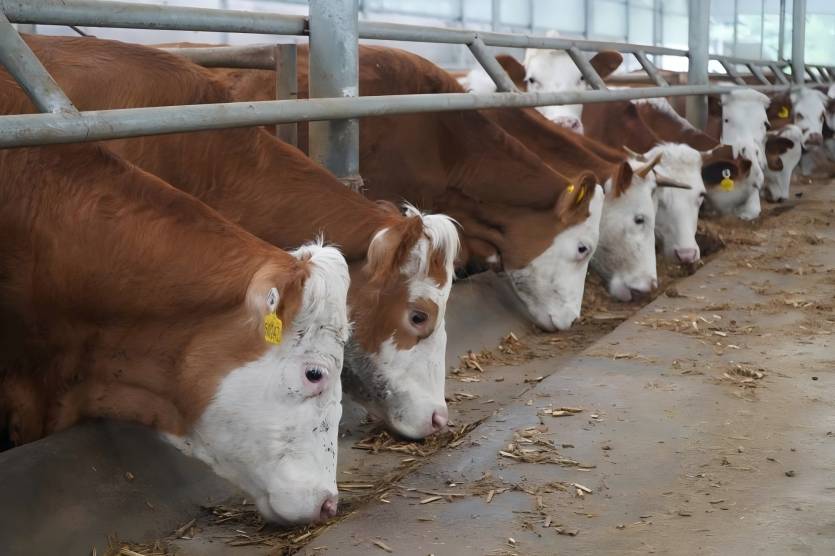
In conclusion, rosemarinic acid can improve the inflammation, oxidative stress and the propagation of pathogenic microorganisms in animals, and as a phenolic acid, it has a great potential to regulate the microorganisms in the digestive tract of animals, the health of the body and the production performance, and more in-depth research can be conducted in order to give full play to its value in the future.
4 Summary and Outlook
Rosmarinic acid has a variety of biological functions, not only can it eliminate the abnormally increased reactive oxygen species through dehydrogenation, regulate the level of antioxidants and the antioxidant signaling pathway to reduce the occurrence of oxidative stress, but also inhibit the NF-κB signaling pathway through multiple pathways, exert anti-inflammatory effects through different signaling factors, inhibit the proliferation of bacteria, and protect the liver, which is beneficial to the health of the body. Rosmarinic acid has the potential to maintain the stability of oxidative stress-inflammatory response-immunity tripartite linkage in animals, but so far, the research on rosmarinic acid in livestock and poultry is still relatively scarce, and the molecular mechanism of the physiological function of rosmarinic acid in different animals as well as the appropriate amount of rosmarinic acid in different animals need to be further explored.
In addition, the physicochemical properties of rosmarinic acid are susceptible to the effects of Ca2+ and Mg2+, which adds many difficulties and challenges to its research in livestock and poultry. In the future, we can focus on molecular docking, high-throughput sequencing and structural modification of rosmarinic acid [67]. There is a wide variety of metabolites of rosmarinic acid in animals, and an in-depth and comprehensive understanding of its pathways and mechanisms of action in relation to its metabolites would be beneficial to the development of rosmarinic acid as well as precision feeding.
References:
[ 1 ] GU F , HU P , CAI D M , et al. Advances in application of antibiotics and their substitutes in healthy animal husbandry[ J] . Chinese Journal of Animal Nutrition , 2023 , 35( 10) : 6247-6256. ( in Chinese)
[ 2 ] SAKARIKOU C , KOSTOGLOU D , SIMÕES M , et al. Exploitation of plant extracts and phytochemicals a- gainst resistant Salmonella spp. in biofilms[ J] . Food Research International , 2020 , 128 : 108806.
[ 3 ] OLIVEIRA G D A R , DE OLIVEIRA A E , DACONCEIÇÃO E C , et al. Multiresponse optimization of an extraction procedure of carnosol and rosmarinic and carnosic acids from rosemary [ J] . Food Chemistry , 2016 , 211 : 465-473.
[ 4 ] LIANG Z M , WU L Q , DENG X , et al. The antioxidant rosmarinic acid ameliorates oxidative lung dam- age in experimental allergic asthma via modulation of NADPH oxidases and antioxidant enzymes [ J] . In- flammation , 2020 , 43( 5) : 1902-1912.
[ 5 ] SEVGI K , TEPE B , SARIKURKCU C. Antioxidantand DNA damage protection potentials of selected phenolic acids [ J] . Food and Chemical Toxicology , 2015 , 77 : 12-21.
[ 6 ] WU L F GAO W ZHAO P Y et al. Effects of rosemary extract on growth performance , serum antioxi- dant indices , intestinal morphology and intestinal flora of broilers[ J] . Chinese Journal of Animal Nutrition , 2023 , 35( 8) : 5036-5048.
[ 7 ] MUROTA K , NAKAMURA Y , UEHARA M. Flavonoid metabolism : the interaction of metabolites and gut microbiota[ J] .Bioscience , Biotechnology , and Bi- ochemistry , 2018 , 82( 4) : 600-610.
[ 8 ] SCARPATI M L , ORIENTE G. Isolamento e costituzione dell 'acido rosmarinico ( dal rosmarinus off. ) [ J] . Ricerca Scientifica , 1958 , 28 : 2329-2333.
[ 9 ] DEL BAÑO M J , LORENTE J , CASTILLO J , et al. Phenolic diterpenes , flavones , and rosmarinic acid dis- tribution during the development of leaves , flowers , stems , and roots of Rosmarinus oficinalis. antioxidant activity [ J] . flowers , stems , and roots of Rosmarinus oficinalis. Antioxidant activity[ J] .Journal of Agricultural and Food Chemis- try , 2003 , 51( 15) : 4247-4253.
[ 10] GHASEMZADEH RAHBARDAR M , HOSSEINZADEH H. Effects of rosmarinic acid on nervous systemdisorders : an updated review [ J] . Naunyn-Schmiede- berg 's Archives of Pharmacology , 2020 , 393 ( 10) : 1779-1795.
[ 20] NOGUCHI-SHINOHARA M , ONO K , HAMAGUCHI T , et al. Pharmacokinetics , safety and tolerability of melissa officinalis extract which contained rosma- rinic acid in healthy individuals : a randomized con- trolled trial[ J] .PLoS One , 2015 , 10( 5) :e0126422.
[ 21] BABA S , OSAKABE N , NATSUME M , et al. Absorption , metabolism , degradation and urinary excretion of rosmarinic acid after intake of Perilla frutescens ex- tract in humans [ J] . European Journal of Nutrition , 2005 , 44( 1) : 1-9.
[ 22] MOSELE J I , MARTÍN-PELÁEZ S , MACIÀ A , et al. Study of the catabolism of thyme phenols combining in vitro fermentation and human intervention [ J] .Jour - nal of Agricultural and Food Chemistry , 2014 , 62 ( 45) : 10954-10961.
[ 23] NURMI A , NURMI T , MURSU J , et al. Ingestion of oregano extract increases excretion of urinary phenolic metabolites in humans[ J] . Journal of Agricultural and Food Chemistry , 2006 , 54( 18) : 6916-6923.
[ 24] NIEMAN K M , SANOSHY K D , BRESCIANI L , et al. Tolerance , bioavailability , and potential cognitive health implications of a distinct aqueous spearmint ex- tract [ J] . Functional Foods in Health and Disease , 2015 , 5( 5) : 165-187.
[ 25] CHEN J F , BAO X , LIN C L , et al. Pharmacokinetics of rosmarinic acid in rats and tissue distribution in mice [ J] . Latin American Journal of Pharmacy , 2019 , 38( 5) : 985-990.
[ 26] NUNES S , MADUREIRA A R , CAMPOS D , et al. Therapeutic and nutraceutical potential of rosmarinic acid-cytoprotective properties and pharmacokinetic profile[ J] . Critical Reviews in Food Science and Nu- trition , 2017 , 57( 9) : 1799-1806.
[ 27] ZHANG J , WEN Q , QIAN K , et al. Metabolic profile of rosmarinic acid from Java tea ( Orthosiphon stami- neus) by ultra-high-performance liquid chromatogra- phy coupled to quadrupole-time-of-flight tandem mass spectrometry with a three-step data mining strategy [ J ] . chromatogra- phy coupled to quadrupole-time-of-flight tandem mass spectrometry with a three-step data mining strategy [ J ] . Biomedical Chromatography , 2019 , 33 ( 9 ) : e4599.
[ 28] SU P , WANG G N , WU D , et al. Progress in rosma- rinic acid biological activities and its sources[ J] .Food and Fermentation Industries , 2008 , 34( 12) . 135-138.
[ 29] SU J , JIA F Y , LU J J , et al. Characterization of the metabolites of rosmarinic acid in human liver micro- somes using liquid chromatography combined with liquid chromatography with electrospray ionization tandem mass spectrometry[ J] . Biomedical Chromatography , 2020 , 34( 4) :e4806.
[ 30] LONG M M CHENG X ZHAO Z D et al. Research progress on pharmacological effect and delivery sys- tem of rosmarinic acid [ J] . Chinese Traditional and Herbal Drugs , 2023 , 54 ( 11) : 3715 - 3724. ( in Chi- nese)
[ 31] FERNANDO P M D J , PIAO M J , KANG K A , et al. Rosmarinic acid attenuates cell damage against UVB radiation-induced oxidative stress via enhancing an- tioxidant effects in human HaCaT cells[ J] . Biomole- cules & Therapeutics , 2016 , 24( 1) : 75-84.
[ 32] HASANEIN P , SHARIFI M. Effects of rosmarinic acid on acetaminophen-induced hepatotoxicity in male Wistar rats [ J] .Pharmaceutical Biology , 2017 , 55( 1) : 1809-1816.
[ 33] SADEGHI A , BASTIN A R , GHAHREMANI H , et al. The effects of rosmarinic acid on oxidative stress parameters and inflammatory cytokines in lipopolysac- charide-induced peripheral blood mononuclear cells [ J] . Molecular Biology Reports , 2020 , 47( 5) : 3557- 3566.
[ 34] KHALAF A A , HASSANEN E I , IBRAHIM M A , et al. Rosmarinic acid attenuates chromium-induced he- patic and renal oxidative damage and DNA damage in rats[ J] . ] . Journal of Biochemical and Molecular Toxi- cology , 2020 , 34( 11) :e22579.
[ 35] ZHAO W X WU J M DANG M M et al. Combination of hesperidin and rosmarinic acid affects cecal morphology , antioxidant function , microbiota struc- ture , and barrier function of finishing pigs [ J/OL] . and barrier function of finishing pigs[ J/OL] .Ac- ta Microbiologica Sinica : 1- 15 [ 2023 - 09- 02] . ht- tps://doi. org/10. 13343/j. cnki. wsxb. 20230225.
[ 36] NIKSHENAS SHAHRESTANI V , HADDADI M ,SAMZADEH KERMANI A R.Behavioral and molec- ular analysis of antioxidative potential of rosmarinic acid against methamphetamine-induced augmentation of Casp3a mRNA in the zebrafish brain[ J] .Basic and Clinical Neuroscience , 2021 , 12( 2) : 243-254.
[ 37] MA Z J , LU Y B , YANG F G , et al. Rosmarinic acid exerts a neuroprotective effect on spinal cord injury by suppressing oxidative stress and inflammation via modulating the Nrf2/HO-1 and TLR4/NF-κB path- ways [ J ] . Toxicology and Applied Pharmacology , 2020 , 397 : 115014.
[ 38] LIU C P , LIU J X , GU J Y , et al. Combination effect of three main constituents from Sarcandra glabra in- hibits oxidative stress in the mice following acute lung injury : a role of MAPK-NF-κB pathway[ J] . Frontiers in Pharmacology , 2020 , 11 : 580064.
[ 39] LIN S Y , WANG Y Y , CHEN W Y , et al. Hepatoprotective activities of rosmarinic acid against extrahepatic cholestasis in rats [ J] . Toxicology , 2017 , 108( Part A) : 214-223.
[ 40] GHASEMIAN M , OWLIA S , OWLIA M B. Review of anti-inflammatory herbal medicines [ J] . Advances in Pharmacological Sciences , 2016 , 2016 : 9130979.
[ 41] LV R X , DU L L , LIU X Y , et al. Rosmarinic acid at tenuates inflammatory responses through inhibiting HMGB1/TLR4/NF-κB signaling pathway in a mouse model of Parkinson 's disease [ J] . Life Sciences , 2019 , 223 : 158-165.
[ 42] WANG W J , CHENG M H , LIN J H , et al. Effect of a rosmarinic acid supplemented hemodialysis fluid on inflammation of human vascular endothelial cells [ J] . . Brazilian Journal of Medical and Biological Research , 2017 , 50( 12) :e6145.
[ 43] FUJITA K , MOTOKI K , TAGAWA K , et al. HMGB1 , a pathogenic molecule that induces neurite degeneration via TLR4-MARCKS , is a potential thera- peutic target for Alzheimer 's disease [ J] . Scientific Reports , 2016 , 6 : 31895.
[ 44] KANTAR GOK D , OZTURK N , ER H K , et al. Effects of rosmarinic acid on cognitive and biochemi- cal alterations in ovariectomized rats treated with D- galactose [ J] . Folia Histochemica et Cytobiologica , 2015 , 53( 4) : 283-293.
[ 45] JIN B R , CHUNG K S , CHEON S Y , et al. Rosmarinic acid suppresses colonic inflammation in dextran sul- phate sodium ( DSS)-induced mice via dual inhibition of NF-κB and STAT3 activation [ J] . Scientific Reports , 2017 , 7 : 46252.
[ 56] WANG J Y , XU H M , JIANG H , et al. Neurorescue effect of rosmarinic acid on 6-hydroxydopamine-le- sioned nigral dopamine neurons in rat model of Par- kinson 's disease [ J] . Journal of Molecular Neuro- science , 2012 , 47( 1) : 113-119.
[ 57] LI G S , JIANG W L , TIAN J W , et al. In vitro and in vivo antifibrotic effects of rosmarinic acid on experi- mental liver fibrosis[ J] . Phytomedicine , 2010 , 17( 3/ 4) : 282-288.
[ 58] DOMITROVIC′ R , ŠKODA M , VASILJEV MAR CHESI V et al. Rosmarinic acid ameliorates acute liv-
er damage and fibrogenesis in carbon tetrachloride-in- toxicated mice [ J] . Food and Chemical Toxicology , 2013 , 51 : 370-378.
[ 59] TAI R Q. Effects of rosmarinic acid on antioxidant level and fat metabolism in finishing pigs [ D] . Mas- ter 's Thesis. Yangling : Northwest A&F University , 2022.( in Chinese).
[ 60] CHEN L ZHAO D Y WU J M et al. Combination effects of hesperidin and rosmarinic acid on growth performance , meat quality and antioxidant function in broilers[ J] . Journal of Nanjing Agricultural Universi- ty , 2023 , 46( 4) : 756-763.
[ 61] LEI M K , LI R L , LI P P , et al. Effects of dietary ros- marinic acid on colonic microbiota composition , barri- er function and inflammatory response in weaned pig- lets challenged with enterotoxigenic Escherichia coli K88[ J] . Chinese Journal of Animal Nutrition , 2022 , 34( 8) : 4944-4958. ( in Chinese)
[ 62] YOU J M , YANG Q Z , GONG J T , et al. Effects of rosmarinic acid on growth performance , immune function and inflammatory response of broilers challenged with Eimeria acervulina[ J] . Chinese Journal of Ani- mal Nutrition , 2023 , 35( 9) : 5696-5707. ( in Chinese)
[ 63] CHEN J L , YU B , CHEN D W , et al. Changes of porcine gut microbiota in response to dietary chlorogenic acid supplementation [ J] . Applied Microbiology and Biotechnology , 2019 , 103( 19) : 8157-8168.
[ 64] ZHANG Q Y. Effects of gallic acid on growth per- formance of preweaned dairy calves [ D] . Master 's Thesis. Harbin : Northeast Agricultural University , 2022. ( in Chinese)
[ 65] YUAN Z H , ZHANG K Y , DING X M , et al. Effect of tea polyphenols on production performance , egg quali- ty , and hepatic antioxidant status of laying hens in va- nadium-containing diets[ J] . Poultry Science , 2016 , 95 ( 7) : 1709-1717.
[ 66] ZHAO B C , WANG T H , CHEN J , et al. Effects of dietary supplementation with a carvacrol-cinnamalde- hyde-thymol blend on growth performance and intesti- nal health of nursery pigs[ J] .Porcine Health Manage- ment, 2023 , 9( 1) : 24.
[ 67] GUAN H Q , LUO W B , BAO B H , et al. A compre hensive review of rosmarinic acid : from phytochemis- try to pharmacology and its new insight [ J] . Mole- cules , 2022 , 27( 10) : 3292.


 English
English French
French Spanish
Spanish Russian
Russian Korean
Korean Japanese
Japanese